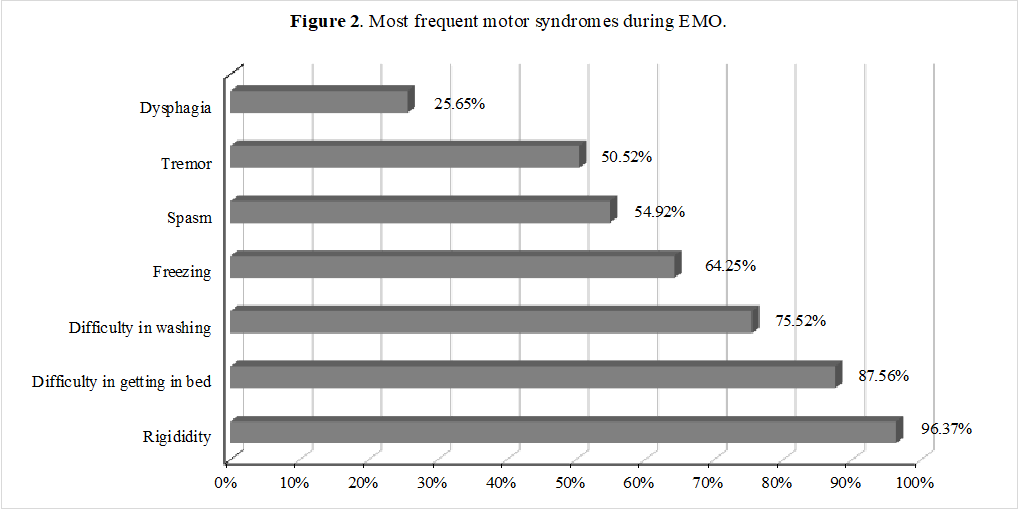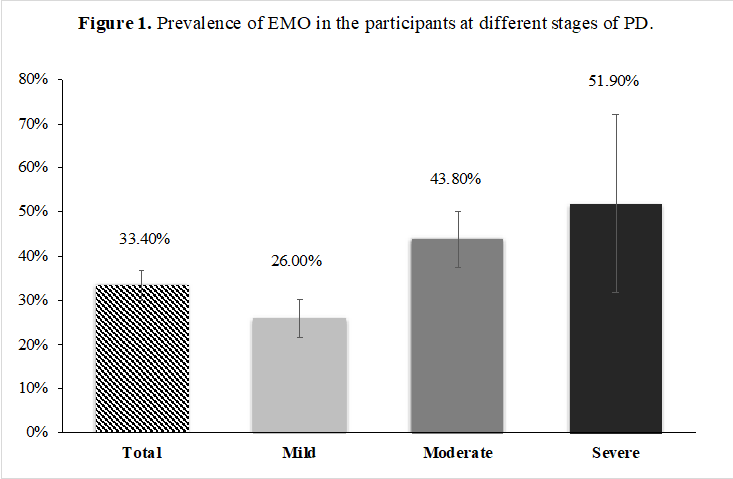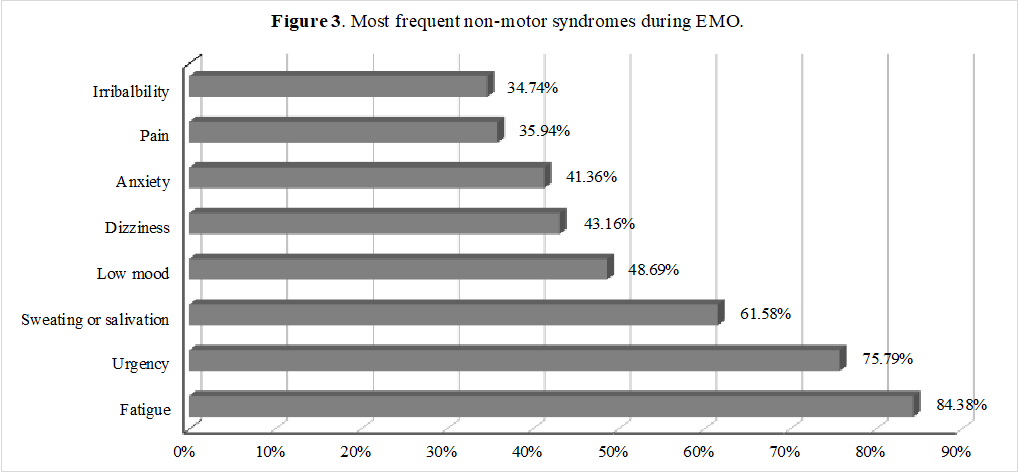Session Information
Date: Wednesday, September 25, 2019
Session Title: Phenomenology and Clinical Assessment of Movement Disorders
Session Time: 1:15pm-2:45pm
Location: Les Muses Terrace, Level 3
Objective: To explore the prevalence and associated risk factors of early morning off (EMO) among outpatients with Parkinson’s disease (PD) in China.
Background: PD is the second most prevalent neurodegenerative disease in elders in China.EMO has been recognized as one of the motor fluctuations in PD and occurs in 59.7% of PD patients in Europe. However, the prevalence and related risk factors of EMO in China remain unclear.
Method: Outpatients with idiopathic PD diagnosed based on the criteria set by Movement Disorder Society in 2015 and received dopaminergic therapy were recruited from 54 centers. All the PD patients who met the inclusion criteria were screened to identify the presence of EMO using established criteria. The prevalence of EMO and corresponding 95% confidence intervals (CIs) at different stages of PD were estimated. Both univariate and multivariable logistic regression analyses were performed to identify risk factors associated with EMO onset and estimate their odds ratios (ORs).
Results: 680 PD patients with a mean age of 63.9 ± 9.35 years and a median H-Y stage of 2 (1.5, 2.5) were included. EMO was diagnosed in 227 patients aged 65.2 ± 8.97 on average with a median H-Y stage of 2.5 (2, 3). The prevalence of EMO was 33.4% (95%CI: 29.8%-36.9%) in the total population and increased with H-Y stage (Figure 1). The common MS and NMS during EMO periods have also been showed in Figure 2 and Figure3. Aging, longer disease duration, advanced H-Y stage, poor nighttime sleep, and increased awaking times were significantly associated with increased EMO risk. However, after adjusting for other factors, only H-Y stage and nighttime sleep quality remained significantly associated with EMO risk. Compared with mild PD patients, moderate PD patients were at 73% higher risk of developing EMO (OR, 95% CI: 1.73, 1.17-2.54), with a non-significantly but consistently increased risk of 67% (OR, 95% CI: 1.67, 0.63-4.40) among severe PD patients. The ORs of developing EMO among PD patients with general or poor nighttime sleep were 2.21 (95% CI: 1.41-3.52) and 3.66 (95% CI: 2.22-6.09) respectively, comparing with those with good sleep.
Conclusion: EMO is common in Chinese PD patients and proved to be associated with many MS and NMS at high rates. Patients with advanced PD stage and poor sleep quality are confronted with much higher risk of developing EMO comparing with their counterparts.
To cite this abstract in AMA style:
W. Mao, C. Han, J. An, Z. Liu, P. Chan. Prevalence and associated risk factors of early morning off among the patients with Parkinson’s disease in China [abstract]. Mov Disord. 2019; 34 (suppl 2). https://www.mdsabstracts.org/abstract/prevalence-and-associated-risk-factors-of-early-morning-off-among-the-patients-with-parkinsons-disease-in-china/. Accessed January 2, 2026.« Back to 2019 International Congress
MDS Abstracts - https://www.mdsabstracts.org/abstract/prevalence-and-associated-risk-factors-of-early-morning-off-among-the-patients-with-parkinsons-disease-in-china/



